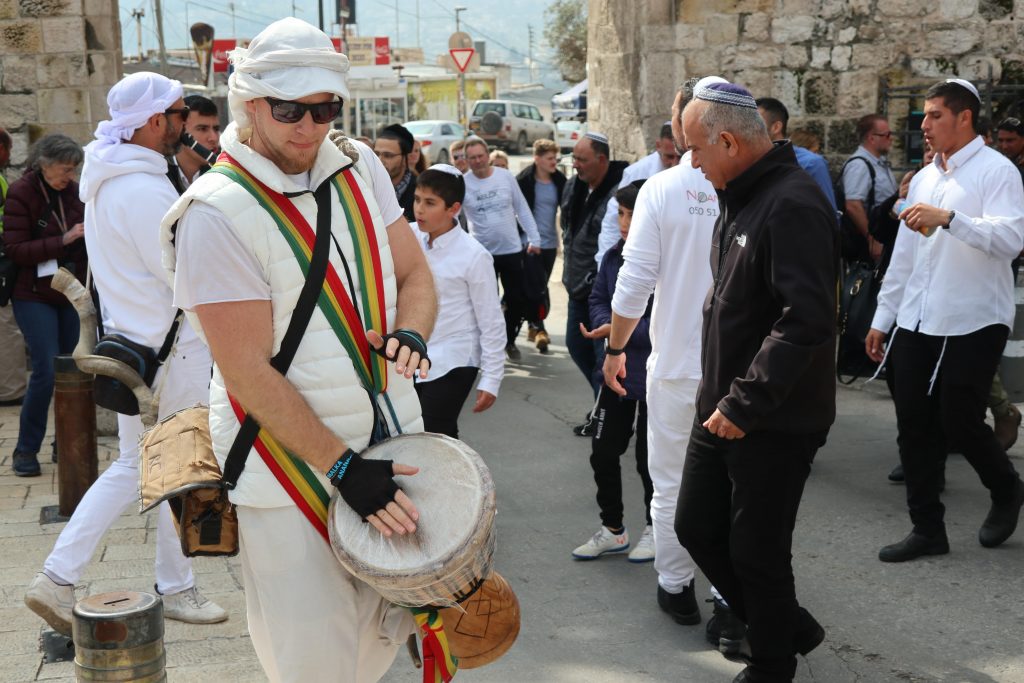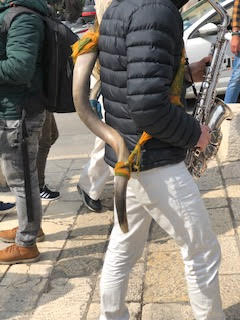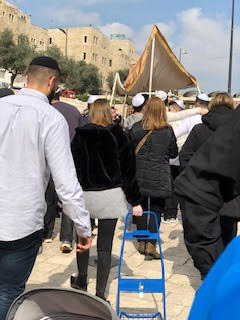The Rabbis on the Plane at Dawn
You may have realized that we were away for a few weeks. I am very grateful to the writers who contributed to this blog and encourage them and others to share their thoughts more frequently. Ellie and I love writing – but we are not the only voices that should be heard.
We were on a Road Scholar “Trip of a Lifetime: Israel and Jordan.” The corona virus followed us, with Bethlehem closing about a week after we were there, and the Tel Aviv airport a few days after we left. So far, none of our group of twenty has reported any illness.

My trip began with a frenzied drive – no, actually a calm one – down and back from Newark to Philadelphia in a Lyft on the New Jersey Turnpike. There was nothing else I could do to reclaim my passport from my printer, left there when I made multiple copies to be super safe. I made the plane only because our planned trip on Amtrak to Liberty Airport made us arrive five hours before – and because Ellie vowed not to let the plane depart without me.
I was surprised by how many people were boarding so close to the closing of the doors. And I couldn’t sleep during the ten-hour flight, not for lack of trying. All the tension got released.
After a long while, in my drowsiness I noticed the man behind me get up and stand in the space a few seats in front of ours, the space left open for storage of food service items and the lavatories. It split the economy seats and the two aisles in the plane.
Standing in the aisle, he unrapped a large white and black shawl, a tallit, I have since learned, and draped it over his head and shoulders. He attached tefillin, two black leather boxes, to his forehead and to his arm with leather straps, and began praying, swaying back and forth, holding a small prayer book. I was fascinated.
But then other men gathered in the same space, performing the same ritual. The flowing garments were beautiful, most with lace or other embellishments on the edge that draped their heads. The strapped arms were odd, almost threatening when I did not understand their meaning and function.

The space became crowded, as more and more joined. Eventually the man behind me sat down, and others flowed in and out. Facing away from me, the movement of so many in their tablecloth-sized tallits was eerie, mysterious, shared prayer that I did not share. Finally I realized we were flying east and it was dawn; the light was escaping around the shade on the plane’s window. Morning prayers.
The last to pray was a woman, dressed in a white suit and pillbox hat, both trimmed in black. She stood alone, facing the corner in front of the first seats in our section.
Do I wish I had talked with them, especially the woman? Of course. But it seemed intrusive to do so.
We saw such public worship rarely in Israel, except at the Western wall of the Temple. Our guide brought us there on Monday, when Bar Mitzvahs take place. Not Bat Mitzvahs, of course; this is an Orthodox space. We prayed with the others on the women’s side of the “wailing wall,” and then joined the women standing on a step behind a fence, watching their boys read the Torah. Rabbis conducted the ceremony, surrounded by men and boys.

We talked with limited shared language with a mother or grandmother, standing there on the step. I had seen her kiss her boy on the procession up the hill, when musicians and a canopy can be hired to add to the festivity. She was very happy and proud.
Being in this Holy Land makes me realize how deeply rooted are the changes that we want to make.

2 Responses
Indeed, deeply rooted: Genesis 3:16. Only by the power of the Holy Spirit will the church be able to transcend the patriarchal culture that emerged after original sin.
Thank you for these images, Regina. I wonder if God hears the prayers separately–male prayers and female prayers?